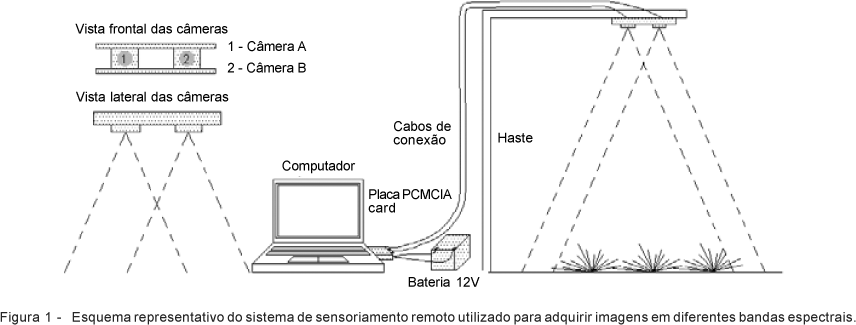The objective of the present work was the detection of different nutritional statuses in Brachiaria decumbens pasture using remote sensing techniques. The area was treated with five rates of nitrogen fertilizer (0, 50, 100, 150 and, 200 kg ha-1) with six repetitions and evaluated in a completely randomized statistical design. A remote sensing system composed of digital cameras, cables, a framegrabber and a computer was used with a three meter metallic support to position the cameras. The system acquired images in two spectral bands simultaneously in two phases. The first phase occurred from February to March 2006 at 15, 21 and, 32 days after fertilization and the second from March to May of 2006 at 28, 36, 45 and, 53 days after reapplication of the same N rates. Vegetation indices were evaluated from the original images, and the data was submitted to regression and correlation analyses. Estimate values of chlorophyll content using the chlorophyll meter SPAD 502 and values of the leaf N content were also acquired. First or second degree models were adjusted to the experimental data for all periods. The indices using the green band proved more efficient to detect the relationship with the estimated chlorophyll values, the leaf N content and the dry mass yield than the red band in all studied periods. Thus, the used remote sensing system technique allowed for the identification of different effects of nitrogen fertilization in the forage.
nitrogen; digital images; vegetation indices







